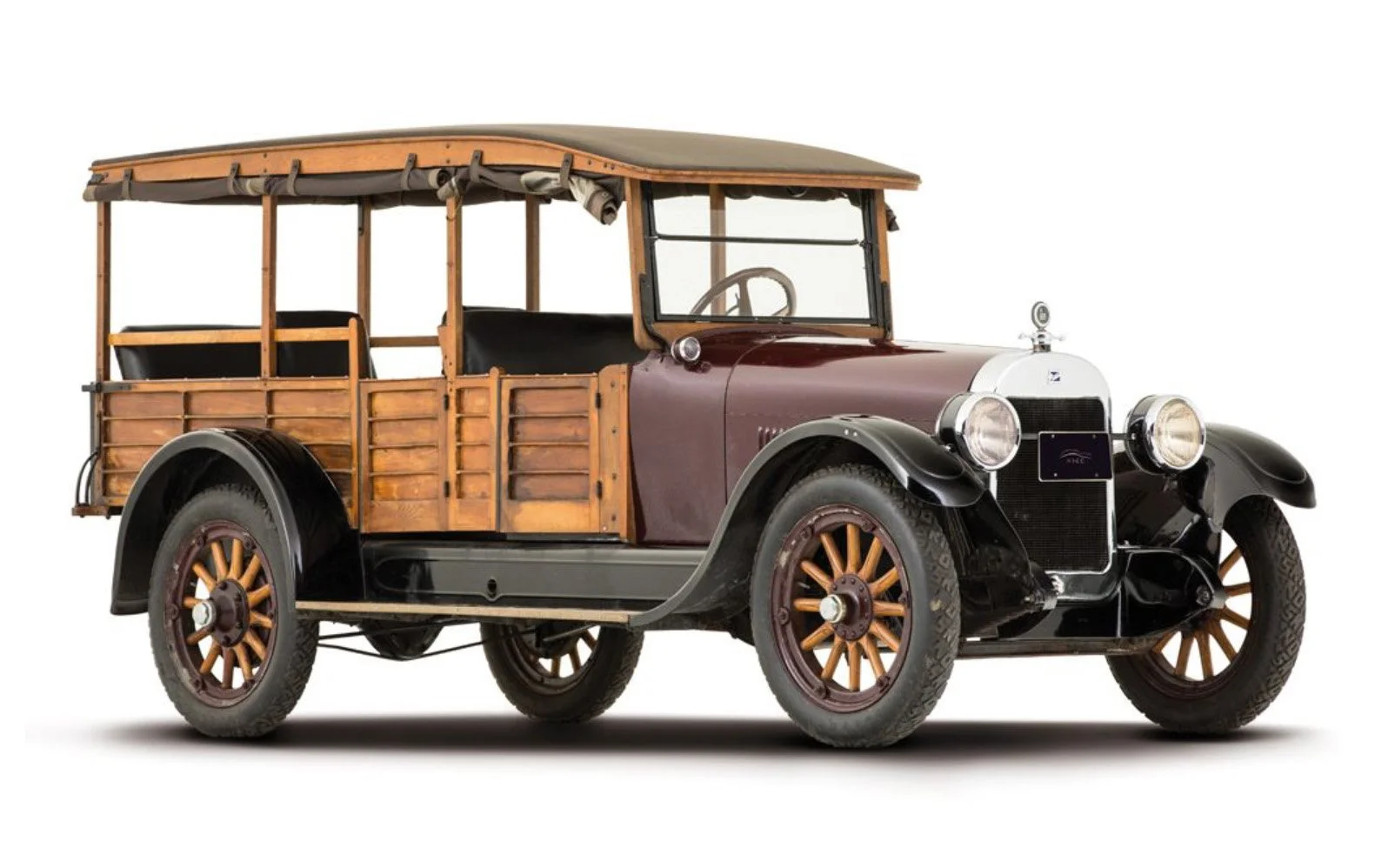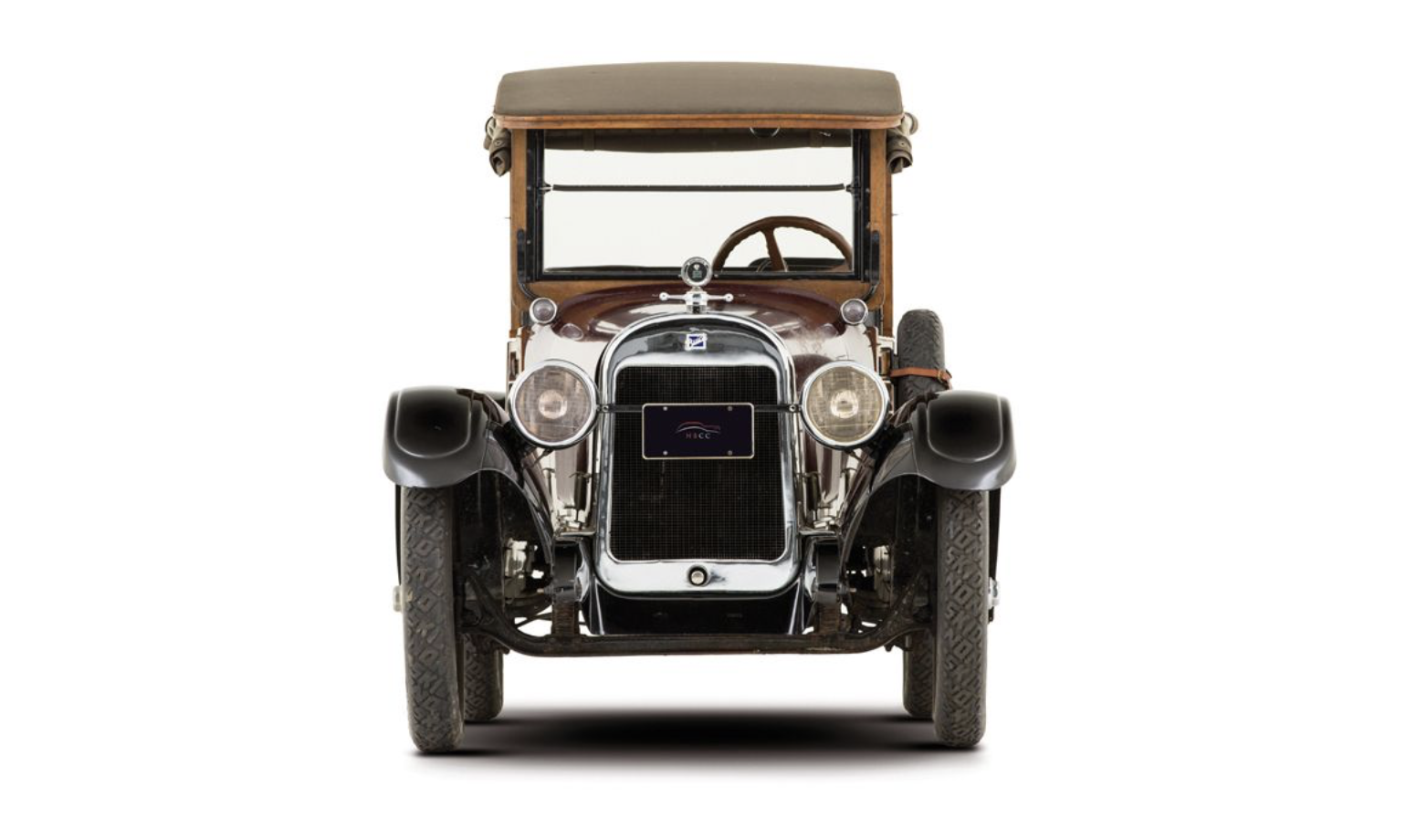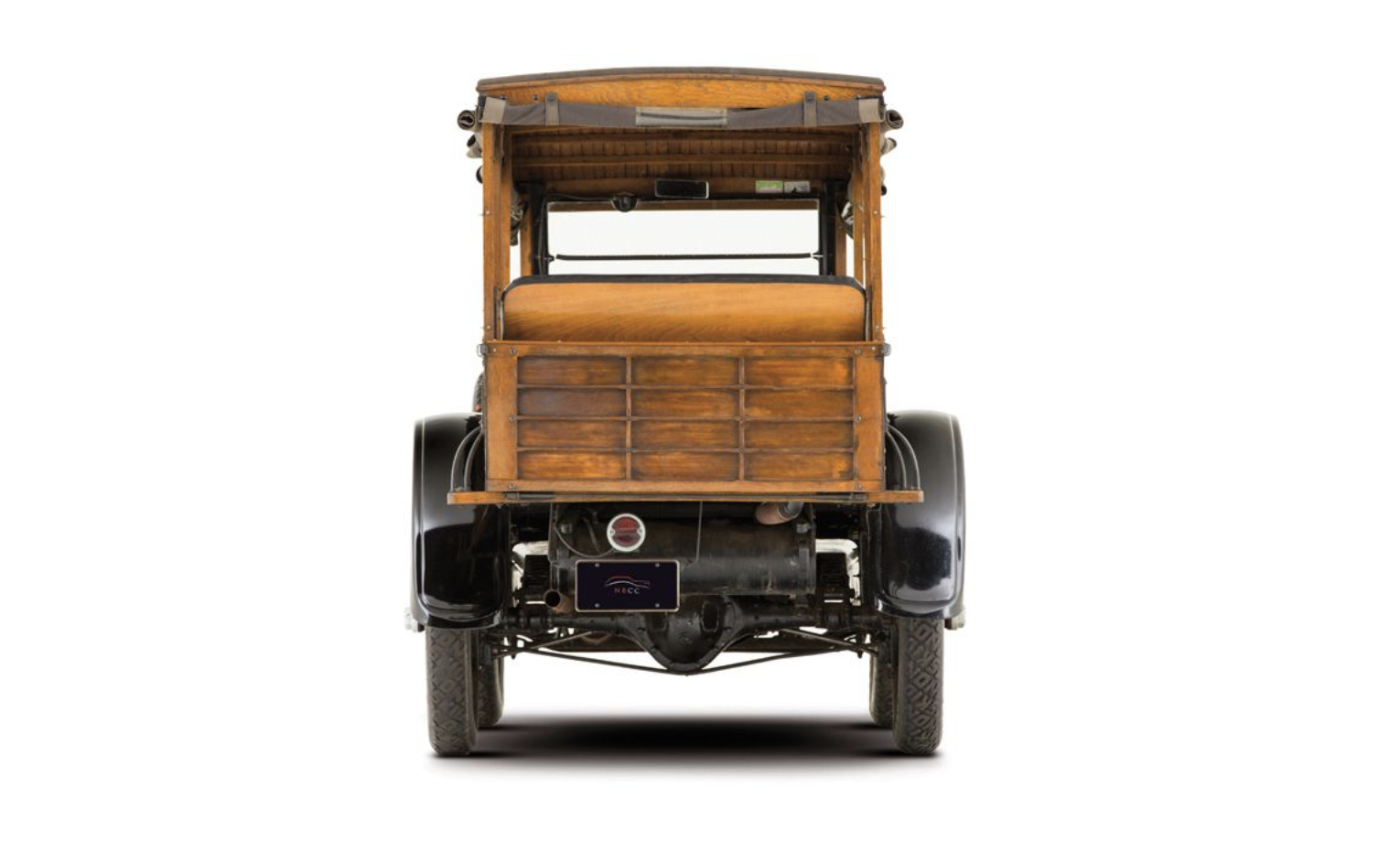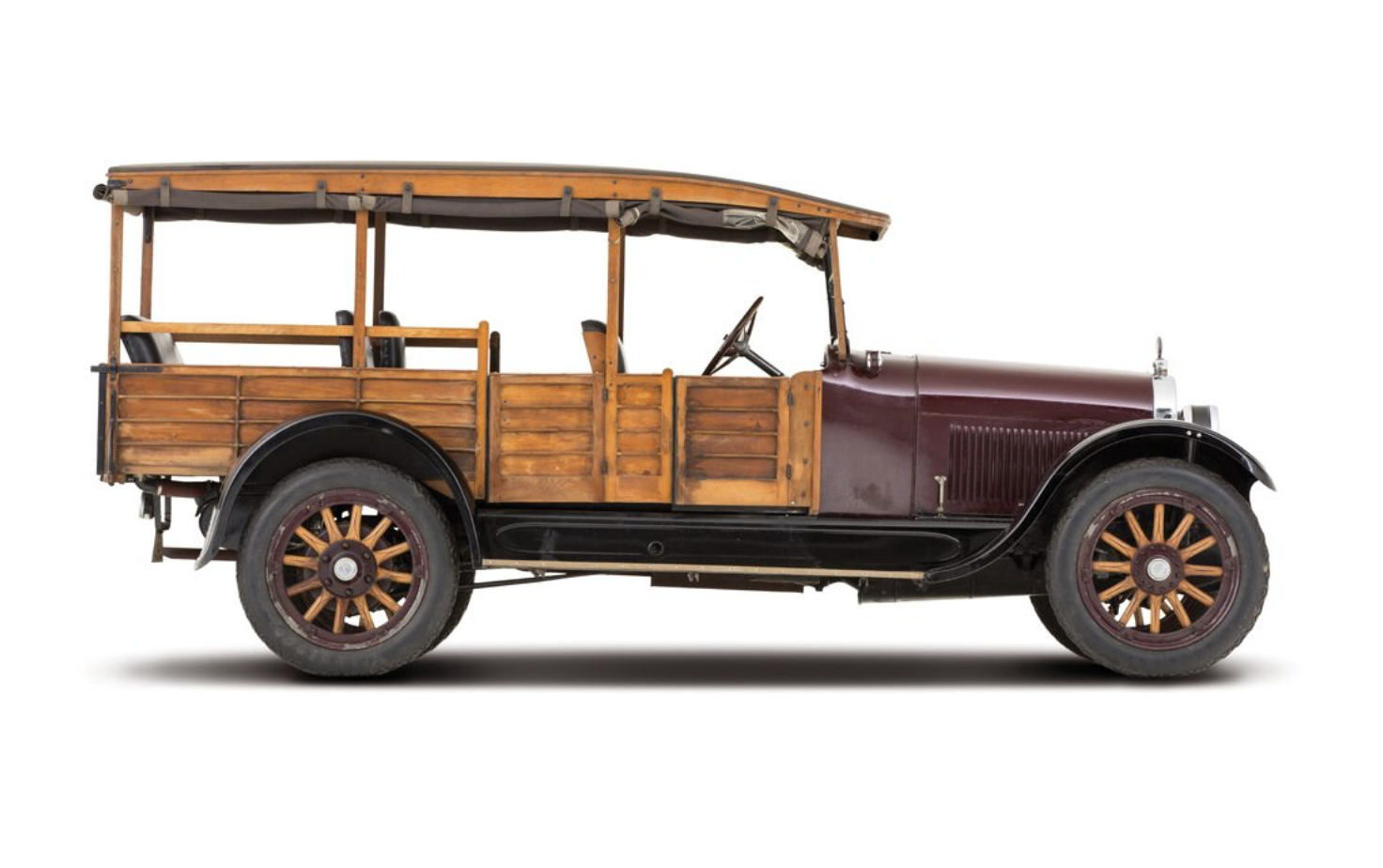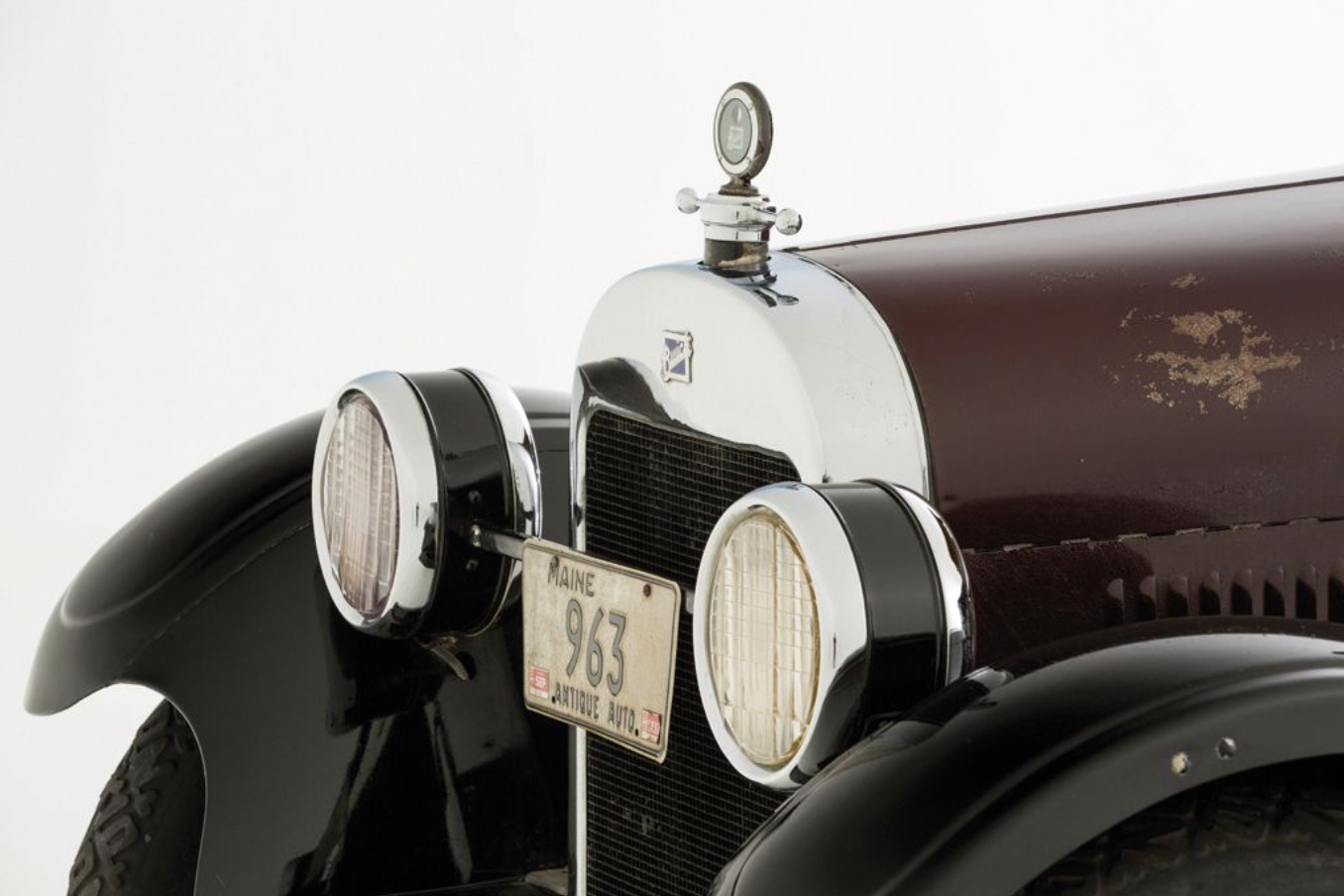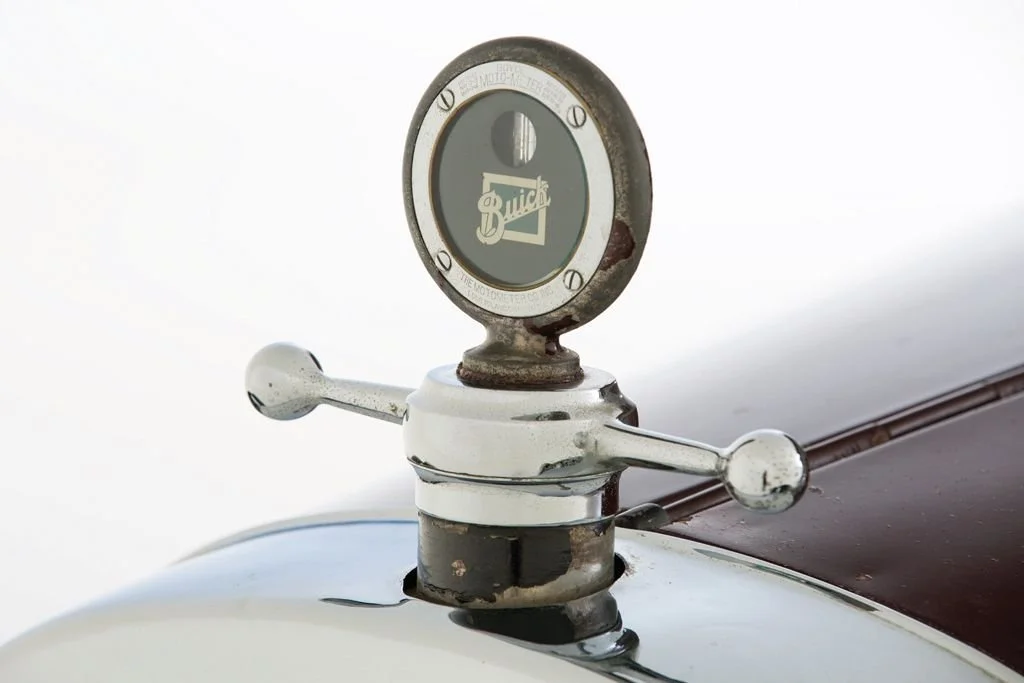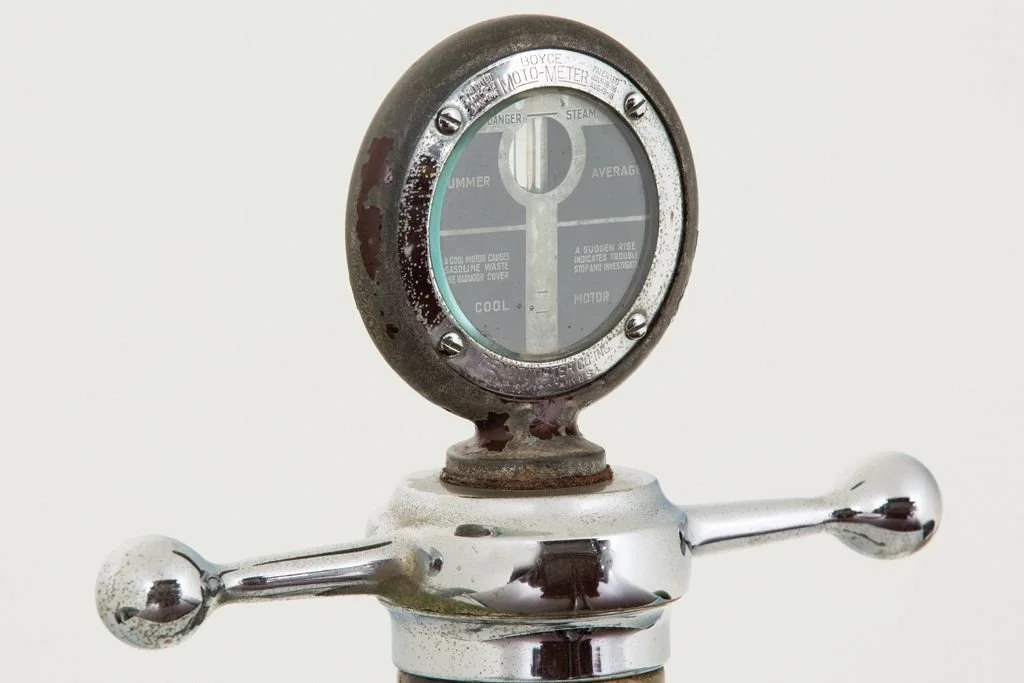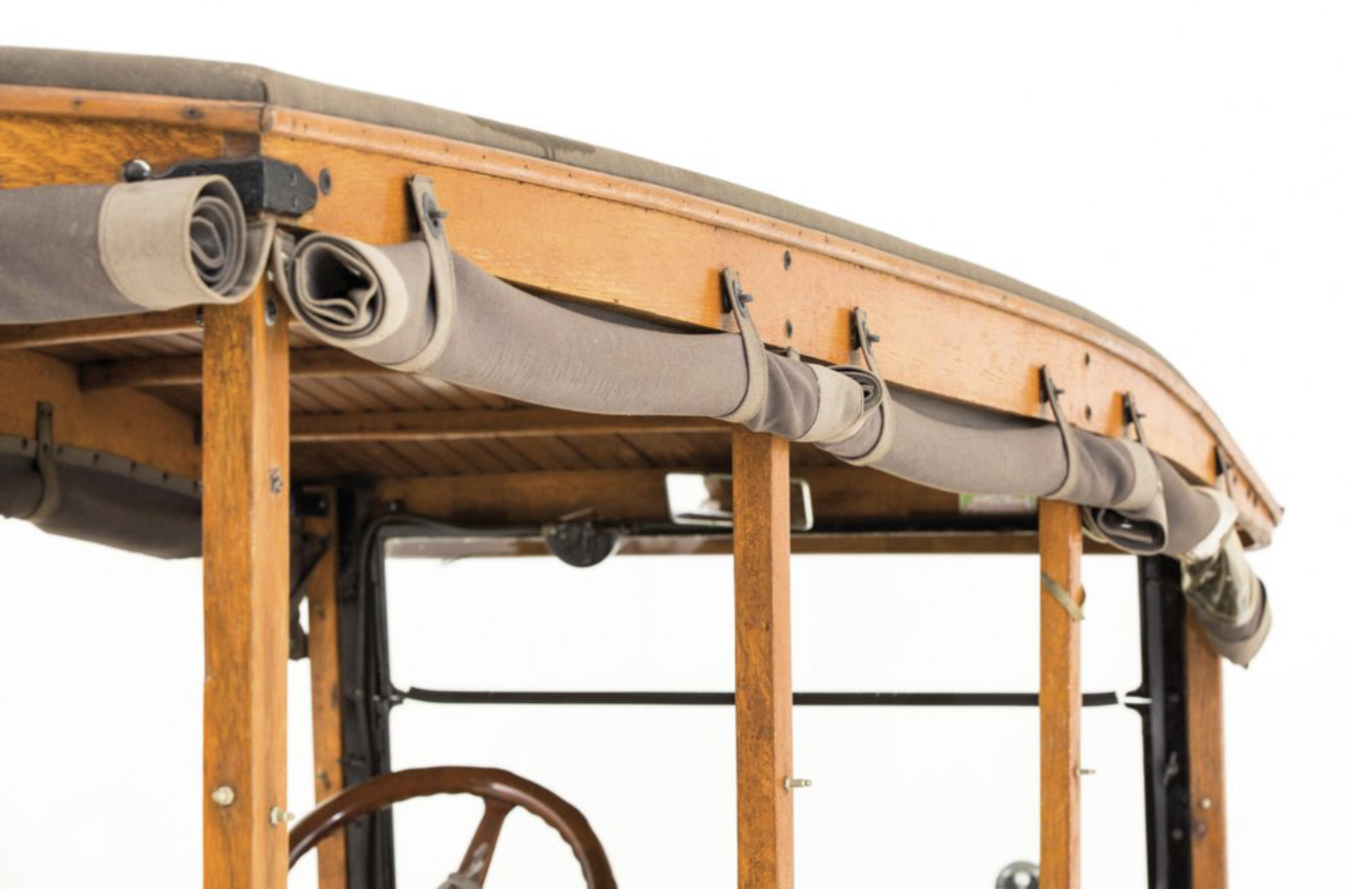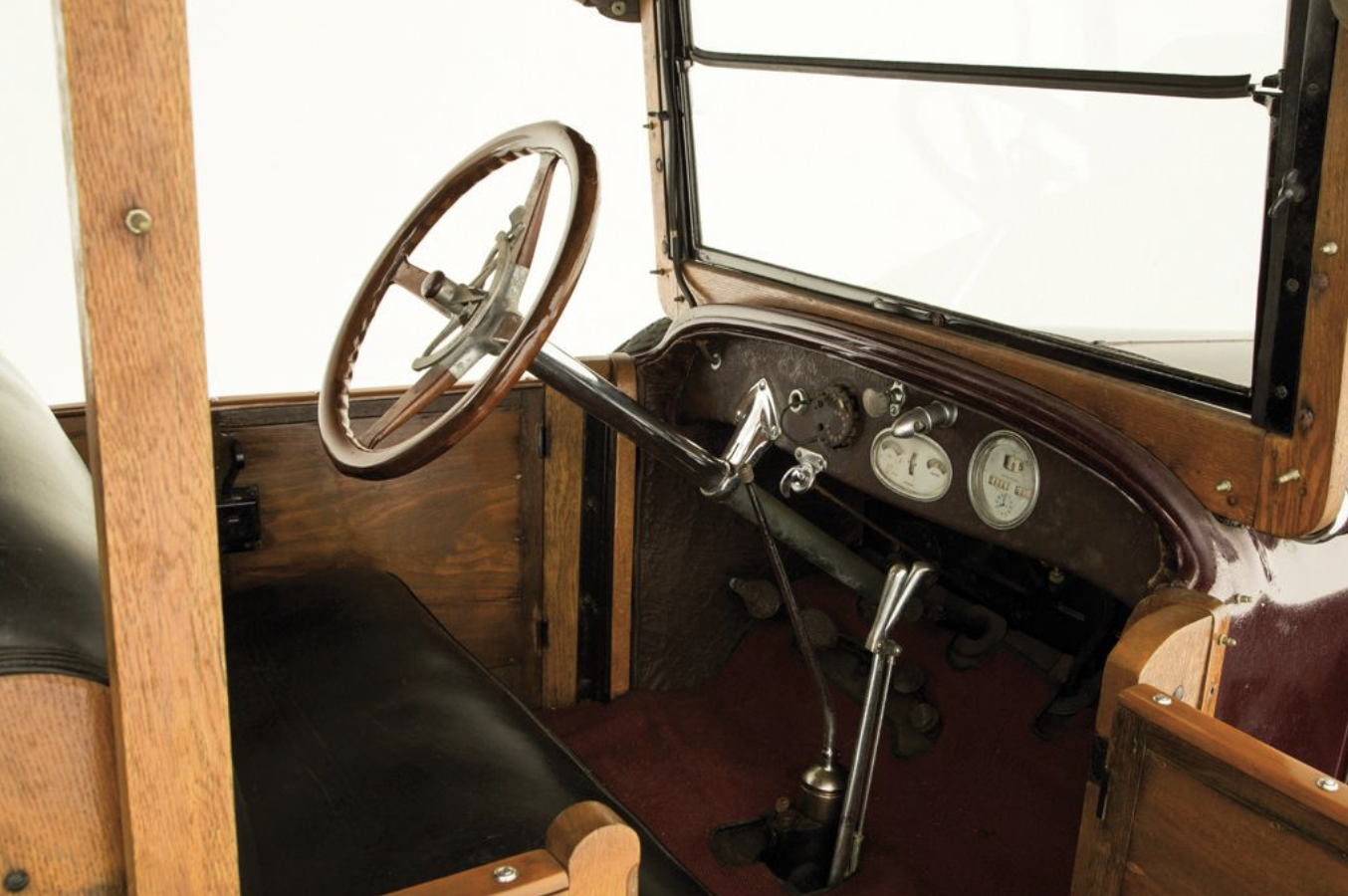-
This Buick Station Wagon has a body produced by J.T. Cantrell & Company of Huntington, NY. It rides on the 124 inch wheelbase series 23-six chassis. With side curtains for all-weather comfort and seating for up to 7 people, it was more practical compared to earlier offerings. It is unknown how many Buick wagons were produced in 1923.
This highly original station wagon was purchased in 2015 from a seller in Maine whose family acquired the car from the first owner in 1957. The seller recalled traveling to Vermont with his father to retrieve the vehicle, and then bringing it back to life after many years of slumber. The car is very well preserved, with nearly all of its original wood and displays a fine patina of age. This car runs well and is often used to give rides to guests of The NB Center.
-
Company
General MotorsMake
BuickModel
Series 23-SixBody style
Station WagonBody Manufacturer
J. T. Cantrell & CModel year
1923Wheelbase
124 inchesLength
202.5 inchesWidth
74 inchesEngine
inline 6 - 242 cidHorsepower
75 hp @ 2800 rpmTransmission
Sliding gear, 3-speed manual
Original Price
N/AProduction
201,572This Car Production
Unknown -
The origin of the Station Wagon can be traced back to the era of horse drawn vehicles. Known early on as Depot Hacks when configured for transporting passengers or Express bodies when transporting goods, these specialized wagons would eventually diverge into station wagons and light duty commercial trucks.
Depot hacks were typically rear or single side entry and a combination of folding seats and cargo space. They were used primarily for carrying passengers with their luggage to and from train depots. As the horse drawn wagon era ended and the automobile replaced it, train depots now became train stations and the station wagon began to evolve. The basic depot hack body first makes an appearance on a Buick chassis starting in 1912. Although offered on the truck chassis not the passenger car. This early attempt was called a Buick body A-22 Wagonette and Express combining the functions of its horse drawn ancestors.
In 1922, the Durant Motor Company presented the first production station wagon, with wood bodies supplied by outside companies and installed at the Durant factory. Buick quickly followed with the introduction of station wagon bodies on both passenger car and truck chassis. These new station wagons were more refined with more comfortable seating, side curtains to protect the passengers from the elements and side doors to facilitate ease of entry and egress.
As the production of station wagon bodies took off, specialized manufacturers took on the task of making the wood bodies under contract for the major car manufacturers. The 1922 Buick station wagon utilized bodies manufactured by Cantrell or Martin-Perry.
The sales brochures depicted the station wagon as “the perfect vehicle for the southern estate or the winter vacationist in the south. Light, sturdy and comfortable, it is designed to withstand the hardest usage on all sorts of roads. It accommodates seven passengers or, with the seats removed, a surprising amount of goods and luggage”.
Buick cars were available with two engines in 1923, a four-cylinder mounted on a 109 inch wheelbase chassis and a six-cylinder mounted on 118 or 124 inch wheelbase. Company calendar year production reached 201,572 cars, good for a third place in the production race, just behind Ford and Chevrolet.

